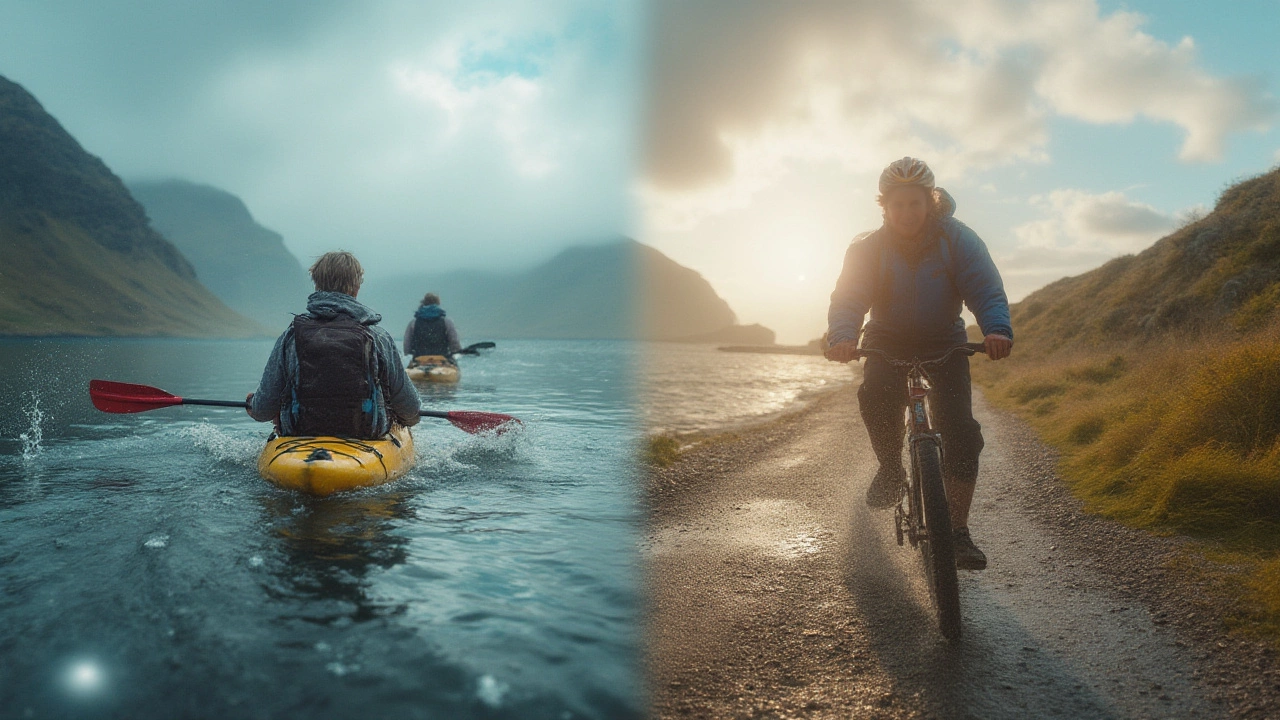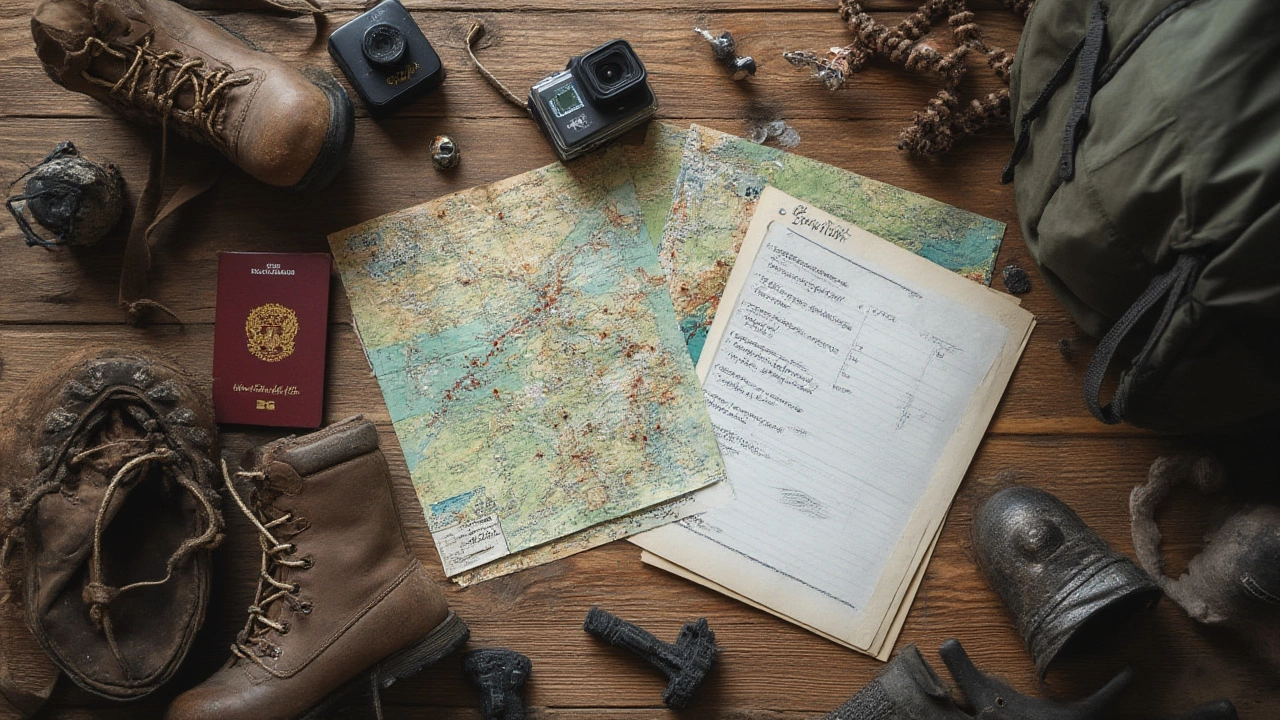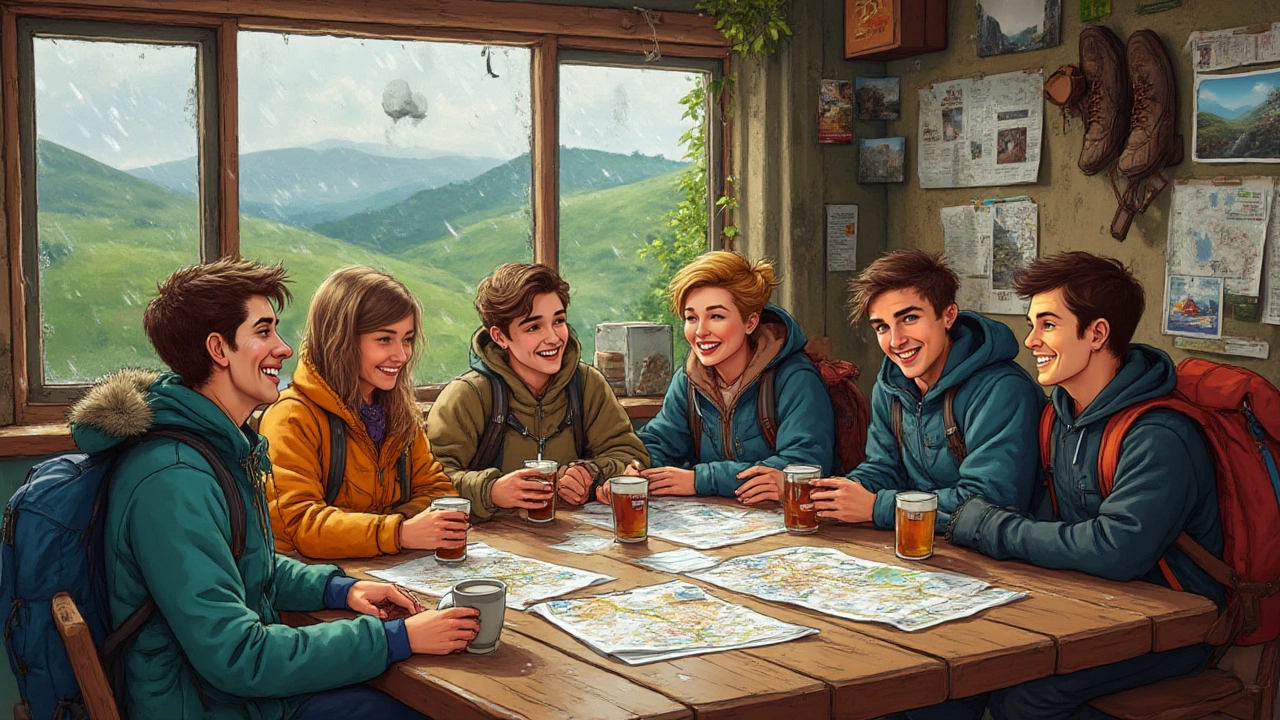You wake up in a tent clinging to a cliff, or maybe at the rim of a volcano, inhaling crisp mountain air. Planning an adventure holiday isn’t just booking a flight and picking a city—it’s about throwing yourself into the wild, the unknown, the heartbeat-skipping stuff most people only dream about. But here’s the kicker: even the most spontaneous adventure takes a bit of smart planning. With a bit of effort and inside scoop, you can turn a regular getaway into a story you’ll tell for years.
Picturing Your Dream Adventure: Finding Your Focus
Dreaming up your ultimate adventure holiday can feel like opening Pandora’s box. Do you want to hike glaciers in Patagonia, raft rapids in Costa Rica, or maybe bike through the deserts of Morocco? It helps to narrow your focus early—and be brutally honest about what ‘adventure’ means to you. The secret? Don’t copy Instagram; pick what genuinely sparks your curiosity. According to the Adventure Travel Trade Association, around 60% of adventure travelers prefer immersion in local cultures, not just adrenaline highs, so sometimes a cooking class in rural Vietnam or tracking orangutans in Borneo counts just as much as bungee jumping.
Your fitness level sets the stage here. If your idea of exercise is walking the dog, climbing Mount Kilimanjaro next month might be a stretch. Instead, go for something with a little challenge and a lot of excitement—maybe a gentle cycling holiday in the Netherlands, or kayaking through the fjords in Norway. The trick is balancing ambition and reality. Look for tours or destinations with options for all abilities (lots of places give you multiple difficulty levels, so check those).
Then comes the research. This part matters more than most folks realize. Dive into first-hand blogs, like personal trip accounts on Reddit’s r/travel or YouTube vlogs showing day-by-day adventures. These stories reveal the hidden pitfalls—was that ‘easy’ trek actually a ten-hour slog through leech-infested jungles? Did the whitewater rafting leave everyone exhilarated, or mostly soaking and shivering? This stuff doesn’t show up in glossy brochures or filtered Instagram posts. There’s a reason the world’s happiest adventurers tend to be the best planners; they know what they’re walking into and can actually enjoy every wild minute.
Keep climate and season in mind. For instance, trekking to Machu Picchu is best done between May and September, when the trails aren’t a muddy slip’n’slide. But if you’re hunting the Northern Lights in northern Norway, go for the dark winter months. Reliable adventure comes down to two things: being in the right place, and the right time. Here’s a quick table that compares popular adventure destinations with their peak seasons for the most wow-worthy experience:
| Destination | Top Adventure | Best Season |
|---|---|---|
| Patagonia | Trekking | Dec–Feb (Summer) |
| Norway | Northern Lights | Sep–Mar (Winter) |
| New Zealand | Hiking, Bungee Jumping | Nov–Apr (Spring/Summer) |
| Peru | Inca Trail | May–Sep (Dry) |
| Costa Rica | Whitewater Rafting | May–Nov (Wet) |
Making your bucket list is fun, but be prepared to let go of something if time, budget, or logistics get in the way. Prioritize two or three experiences that call out the loudest. Those will anchor your trip. The rest? Consider them bonus miles for your wanderlust.

Mapping Out the Details: Turning Dreams Into Action
Here comes the not-so-glamorous part—making it all actually happen. Start by researching logistics, then quickly move into the nuts and bolts: routes, gear, bookings, paperwork. Sounds boring? Trust me, the time you invest here pays back tenfold when you’re actually on the adventure.
Booking well in advance is a must when it comes to popular adventure spots, especially during peak seasons. In Patagonia, for instance, most guarded campsites and refugios sell out six months ahead. The same goes for trekking permits in Nepal, which get snapped up fast for Everest Base Camp and Annapurna circuits. If you love winging it, go for shoulder seasons—fewer crowds, cheaper prices, but also less reliable weather.
Don’t forget about insurance, and I don’t mean the kind that just covers lost luggage. Look for a plan that includes adventure sports and medical evacuation. The sobering reality? The average cost of a helicopter rescue from the Alps is €5,000. For a few dollars a day, you get real peace of mind, especially if you’re heading off-grid. Take copies (digital and paper) of your policy, emergency numbers, and medical info—it’s old-school, but in places with dodgy Wi-Fi, paper rules.
Travel vaccines might sound tedious, but they’re crucial. A survey in the journal Travel Medicine and Infectious Disease found that about 35% of adventure travelers get sick abroad, mostly from food or water. Have a chat with your doctor about what’s needed for your destination—think hepatitis vaccinations for Southeast Asia or malaria pills for parts of Africa. And yes, pack a medical kit. Toss in blister plasters, electrolyte tablets, and (if you’re me) a heroic supply of painkillers for ‘just in case’ moments.
The right kit can make or break a trip. Layers are your friend, especially in places with wild temperature swings. There’s an old guide saying, “Cotton kills”—wear it and you’ll freeze if it gets wet—so lean into synthetic or merino wool clothes. For hiking boots, break them in weeks ahead. No one wants to hike the Andes with blisters the size of grapes. There’s even GPS tracking for belts these days, so if you’re nervous about getting lost or separated, consider a wearable tracker. A lot of adventurers now use apps like Maps.me for offline navigation or AllTrails for detailed route and safety info.
Another planning must: respecting local law and culture. In Bhutan, independent travel is actually forbidden—you can only enter with a registered tour operator. Certain wildlife reserves in Africa have strict no-go zones without guides. Do your homework to avoid accidental trouble. Even drone photography is banned in some regions—like the Galápagos and Machu Picchu—so check before you pack the tech.
Cash vs card is something most people overlook. Many remote places don’t take cards at all (or there’s zero ATMs). In Nepal’s tea house trekking routes or Mongolia’s wide open spaces, carrying small bills in local currency saves piles of frustration. A handy tip: stash half your cash somewhere separate from the rest. No one plans to lose their wallet in a river, but it happens more often than you’d think.
- Check visa rules and entry requirements right after booking—some take weeks.
- Keep emergency contacts both on paper and your phone.
- Leave a travel plan with someone at home (simple Google Doc does the trick).
- Download all travel docs and routes offline, just in case you lose signal.
And since adventure travel can get pricey—gear, insurance, flights, guides—compare costs with spreadsheet precision. According to 2024’s Adventure Travel Trends report, average daily spend for guided adventures is around $350-$400, versus about $150-$200 if you go self-guided but handle your own logistics. Mixing both—booking a few high-impact activities but organizing the rest yourself—is a sweet spot for both savings and flexibility.

Living the Adventure: Practical Tips for an Epic Experience
You’ve mapped it all out. Now comes the part nobody warns you about: things rarely go exactly to plan. But that’s half the fun, right? If the storm blows in and the glacier crossing gets canceled, maybe you’ll find yourself slurping hot chocolate with locals instead. Flexibility is your best friend—most adventure veterans will tell you, rolling with punches turns detours into highlights.
Safety isn’t just about gear and insurance. Know your limits and trust your gut. Listen to your body, not your bravado. Altitude sickness on the Inca Trail, for example, strikes nearly 40% of hikers according to the CDC—even marathon runners aren't immune. Acclimatize slower than you think you need to. Hydrate, eat little and often, and rest before exhaustion sets in. Many tours tell you this, but it’s easy to ignore in the thrill of the moment until you’re flat out in your tent feeling like a rung-out sponge.
Embracing local culture transforms a trip. Learn a handful of words—hello, thank you, where’s the bathroom? Smile (it works everywhere). Be on time for tours, respect local customs (no loud voices in temples, cover up when needed), and always ask before taking someone’s photo. A lot of places reward respect with authentic experiences you never find in a guidebook.
Pack for practicality, not just looks. Instagram likes are great but blisters and rain-soaked jeans aren’t. Fast-drying underwear, a rain shell, and a hat are far more useful than a dozen carefully curated outfits. Think like an adventurer: what will keep you warm, dry, and mobile? Roll everything to save space, and always leave room in your pack for surprises—local crafts, wild snacks, or a muddy pair of shoes that suddenly need stashing.
Food is half the adventure. Depending on where you are, you might end up eating things you’ve never heard of (pickled shark in Iceland, grasshoppers in Thailand). Keep an open mind, but know your own allergies and dietary limits. Carry a basic translation card for big restrictions—some apps like Google Translate are a lifesaver here too. If you’ve got space, stash a couple of protein bars or trail mix for moments when you’re miles from a proper meal.
adventure holiday planning is about expectation versus reality. Instagram floods you with flawless shots, but your trip will absolutely have bumps: missed buses, leech bites, rainouts, or gear malfunctions. Take photos—lots of them—but also be present. That shaky, laughter-filled video of a rainstorm in your tent? In five years, it’ll mean more than the 400th shot of a mountain.
Share your story—keep a daily note, send postcards, post honest updates for friends back home. According to a study out of Cornell, planning and reminiscing about a trip gives your brain more happiness than simply buying things. So stretch out the fun: daydream, plan, adventure, then relive it again and again.
Your adventure holiday is bigger than the sum of its parts. It’s the stories you’ll tell, the fears you conquer, the wild moments when you realize you’re braver than you thought. Plan smart, pack with heart, but leave space for magic—because the best stuff always lives just outside your comfort zone.
